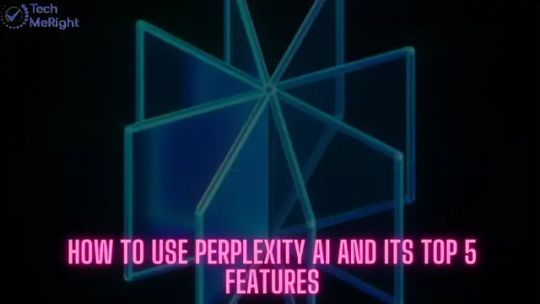#Natural language Processing
Explore tagged Tumblr posts
Text
The Intersection of NLP Eye Movement Integration and the Lesser Banishing Ritual of the Pentagram: A Comparative Analysis

Introduction
Neuro-Linguistic Programming (NLP) has long been associated with cognitive restructuring and psychotherapeutic interventions. One particularly compelling technique within NLP is Eye Movement Integration (EMI), which utilizes guided eye movements to access and integrate fragmented or traumatic memories. Simultaneously, the Lesser Banishing Ritual of the Pentagram (LBRP), a foundational ceremonial magick practice from the Western esoteric tradition, employs ritualized gestures and visualizations of pentagrams to clear and harmonize psychological and spiritual space. This essay explores the striking structural similarities between EMI and the LBRP and considers the possibility that both methods engage hemispheric synchronization and cognitive integration in analogous ways.
The Structure of EMI and LBRP
Eye Movement Integration (EMI) involves tracing figure-eight (∞) or infinity-loop movements with the eyes while engaging in conscious recall of emotionally charged experiences. According to NLP theories, this process activates both hemispheres of the brain, allowing for greater coherence in how memories are processed and reintegrated (Bandler & Grinder, 1982). EMI techniques suggest that deliberate movement across specific spatial axes stimulates neural pathways responsible for sensory and emotional integration (Ward, 2002).
Similarly, the LBRP involves a structured sequence of visualized pentagrams drawn in the cardinal directions, accompanied by divine names and ritual gestures. This sequence is designed to invoke protective forces and create a harmonized psychic field. According to the Golden Dawn tradition (Cicero, 1998), the act of tracing the pentagram is intended to engage multiple layers of cognition: visual-spatial processing, linguistic invocation, and kinesthetic anchoring.
Shared Cognitive and Psychological Mechanisms
Bilateral Stimulation and Neural Integration
Both EMI and LBRP involve movements across spatial dimensions that engage both brain hemispheres.
EMI’s horizontal and diagonal eye movements mimic the process of following the pentagram’s path in ritual, possibly facilitating left-right hemisphere synchronization (Bandler & Grinder, 1982).
Symbolic Encoding and Cognitive Anchoring
EMI often integrates positive resource states during the eye-tracing process, allowing new neurological connections to be formed. The LBRP similarly encodes protective and stabilizing forces into the practitioner’s consciousness through repeated use of divine names and pentagram tracings (Cicero, 1998).
The act of drawing a pentagram in ritual space may serve as an ‘anchor’ to a specific neurological or psychological state, much like NLP anchoring techniques (Hine, 1995).
Emotional and Energetic Reset
EMI is used to defragment and neutralize distressing memories, reducing their disruptive impact. The LBRP, in an esoteric context, serves to “banish” intrusive or unwanted energies, clearing space for more intentional psychological and spiritual work (Cicero, 1998).
Practitioners of both techniques report a sense of clarity, release, and heightened awareness following their use (Hine, 1995).
Implications for Technomagick and NLP Applications
The intersection of NLP and ceremonial magick suggests that structured, repetitive movement combined with intentional focus has profound cognitive and psychological effects. In a Neo-Technomagickal framework, this insight could lead to further experimentation with custom sigils designed for EMI-style integration, or AI-assisted visualization tools for ritual practice.
Future research could examine:
Whether specific geometries (e.g., pentagrams, hexagrams) in ritual movement impact cognitive processing similarly to NLP techniques.
The effectiveness of LBRP-derived rituals in clinical or self-development contexts, particularly for trauma resolution.
The potential for EEG and neurofeedback studies comparing EMI and ritualized eye-tracing methods.
Conclusion
While originating from vastly different paradigms, NLP’s EMI technique and the LBRP share fundamental principles of hemispheric integration, cognitive anchoring, and structured movement through symbolic space. Whether consciously designed or stumbled upon through esoteric practice, these methodologies hint at deep underlying mechanisms of the human mind’s capacity for self-regulation and transformation. Understanding their similarities provides an opportunity to bridge the domains of magick, psychology, and neuroscience, opening new avenues for exploration in both mystical and therapeutic contexts.
G/E/M (2025)

References
Bandler, R., & Grinder, J. (1982). Reframing: Neuro-Linguistic Programming and the Transformation of Meaning. Real People Press.
Cicero, C. & Cicero, S. T. (1998). Self-Initiation into the Golden Dawn Tradition. Llewellyn Publications.
Hine, P. (1995). Condensed Chaos: An Introduction to Chaos Magic. New Falcon Publications.
Ward, K. (2002). Mind Change Techniques to Keep the Change. NLP Resources.
#magick#technomancy#chaos magick#neotechnomagick#neotechnomancer#cyber witch#neotechnomancy#cyberpunk#technomagick#technology#nlp#nlp training#nlp techniques#nlp practitioner#natural language processing#artificialintelligence#nlp coach#neurocrafting#neuromancer#neuroscience#neuro linguistic programming
8 notes
·
View notes
Text









Termovision HUD from The Terminator (1984) A head-up display (HUD) is a transparent display that presents data over a visual screen. A Termovision refers to HUD used by Terminators to display analyses and decision options.
#terminator#computer vision#pattern recognition#red#sci fi#hud#OCR#termovision#natural language processing
40 notes
·
View notes
Text
I am very enthusiastic in NLP and LLMs and am always excited to learn something new about it! Plus since I happened to be a junior student major in AI, and regard NLP as my interest of research, I'm taking this is as a serious career choice.
I'll keep learning about innovations and philosophy in this field, and will always be happy communicate with fellas. But I found no NLP community in this platform (maybe I was blocked though, this app design looks weird), so I built a community to talk about technologies for natural language processing. Hope you'll like it and welcome to join the community.
New here btw, I am not sure if there are any convenient feature to share the community. I just put the link here.
https://www.tumblr.com/communities/nlp-pathways
4 notes
·
View notes
Text
btw i'm a cunning linguist and i'm pro at grammar
6 notes
·
View notes
Text
Growing in a tall man's shadow
youtube
There is a debate happening in the halls of linguistics and the implications are not insignificant.
At question is the idea of recursion: since the 1950s, linguists have held that recursion is a defining characteristics of human language.
What happens then, when a human language is found to be non-recursive?
Here, Noam Chomsky, who first placed the idea of recursion on the table, is the tall man.
And, Daniel Everett, a former missionary to the Piraha tribe in the Amazon forest, is the upstart.
At stake is one of the most important ideas in modern linguistics: recursion.
Does a human language have to be recursive? That's the question Everett poses; and advances the argument that recursion is not inherent to being human.
From the Youtube description of the documentary:
Deep in the Amazon rainforest, the Pirahã people speak a language that defies everything we thought we knew about human communication. No words for colors. No numbers. No past. No future. Their unique way of speaking has ignited one of the most heated debates in linguistic history. For 30 years, one man tried to decode their near-indecipherable language—described by The New Yorker as “a profusion of songbirds” and “barely discernible as speech”. In the process, he shook the very foundations of modern linguistics and challenged one of the most dominant theories of the last 50 years: Noam Chomsky’s Universal Grammar. According to this theory, all human languages share a deep, innate structure—something we are born with rather than learn. But if the Pirahã language truly exists outside these rules, does it mean that everything we believed about language was wrong? If so, one of the most powerful ideas in linguistics could crumble.
Documentary: The Amazon Code
Directed by: Randal Wood, Michael O’Neill
Production : Essential Media, Entertainment Production, ABC Australia, Smithsonian Networks & Arte France
=-=-=-=-=-=-=-=-=-=-=-=-=-=-=-=-=-=-=-==-=-=-=-=-=-=-
I think that there is more to come with this story, so here is a running list of info by and from people who interact with the idea on a regular basis and actually know what they're talking about:
The Battle of the Linguists - Piraha Part 2 by K. Klein
#language#linguistics#documentary#natural language processing#NLP#large language model#LLM#chatgpt#artificial intelligence#Youtube
4 notes
·
View notes
Text
Key Differences Between AI and Human Communication: Mechanisms, Intent, and Understanding
The differences between the way an AI communicates and the way a human does are significant, encompassing various aspects such as the underlying mechanisms, intent, adaptability, and the nature of understanding. Here’s a breakdown of key differences:
1. Mechanism of Communication:
AI: AI communication is based on algorithms, data processing, and pattern recognition. AI generates responses by analyzing input data, applying pre-programmed rules, and utilizing machine learning models that have been trained on large datasets. The AI does not understand language in a human sense; instead, it predicts likely responses based on patterns in the data.
Humans: Human communication is deeply rooted in biological, cognitive, and social processes. Humans use language as a tool for expressing thoughts, emotions, intentions, and experiences. Human communication is inherently tied to understanding and meaning-making, involving both conscious and unconscious processes.
2. Intent and Purpose:
AI: AI lacks true intent or purpose. It responds to input based on programming and training data, without any underlying motivation or goal beyond fulfilling the tasks it has been designed for. AI does not have desires, beliefs, or personal experiences that inform its communication.
Humans: Human communication is driven by intent and purpose. People communicate to share ideas, express emotions, seek information, build relationships, and achieve specific goals. Human communication is often nuanced, influenced by context, and shaped by personal experiences and social dynamics.
3. Understanding and Meaning:
AI: AI processes language at a syntactic and statistical level. It can identify patterns, generate coherent responses, and even mimic certain aspects of human communication, but it does not truly understand the meaning of the words it uses. AI lacks consciousness, self-awareness, and the ability to grasp abstract concepts in the way humans do.
Humans: Humans understand language semantically and contextually. They interpret meaning based on personal experience, cultural background, emotional state, and the context of the conversation. Human communication involves deep understanding, empathy, and the ability to infer meaning beyond the literal words spoken.
4. Adaptability and Learning:
AI: AI can adapt its communication style based on data and feedback, but this adaptability is limited to the parameters set by its algorithms and the data it has been trained on. AI can learn from new data, but it does so without understanding the implications of that data in a broader context.
Humans: Humans are highly adaptable communicators. They can adjust their language, tone, and approach based on the situation, the audience, and the emotional dynamics of the interaction. Humans learn not just from direct feedback but also from social and cultural experiences, emotional cues, and abstract reasoning.
5. Creativity and Innovation:
AI: AI can generate creative outputs, such as writing poems or composing music, by recombining existing patterns in novel ways. However, this creativity is constrained by the data it has been trained on and lacks the originality that comes from human creativity, which is often driven by personal experience, intuition, and a desire for expression.
Humans: Human creativity in communication is driven by a complex interplay of emotions, experiences, imagination, and intent. Humans can innovate in language, create new metaphors, and use language to express unique personal and cultural identities. Human creativity is often spontaneous and deeply tied to individual and collective experiences.
6. Emotional Engagement:
AI: AI can simulate emotional engagement by recognizing and responding to emotional cues in language, but it does not experience emotions. Its responses are based on patterns learned from data, without any true emotional understanding or empathy.
Humans: Human communication is inherently emotional. People express and respond to emotions in nuanced ways, using tone, body language, and context to convey feelings. Empathy, sympathy, and emotional intelligence play a crucial role in human communication, allowing for deep connections and understanding between individuals.
7. Contextual Sensitivity:
AI: AI's sensitivity to context is limited by its training data and algorithms. While it can take some context into account (like the previous messages in a conversation), it may struggle with complex or ambiguous situations, especially if they require a deep understanding of cultural, social, or personal nuances.
Humans: Humans are highly sensitive to context, using it to interpret meaning and guide their communication. They can understand subtext, read between the lines, and adjust their communication based on subtle cues like tone, body language, and shared history with the other person.
8. Ethical and Moral Considerations:
AI: AI lacks an inherent sense of ethics or morality. Its communication is governed by the data it has been trained on and the parameters set by its developers. Any ethical considerations in AI communication come from human-designed rules or guidelines, not from an intrinsic understanding of right or wrong.
Humans: Human communication is deeply influenced by ethical and moral considerations. People often weigh the potential impact of their words on others, considering issues like honesty, fairness, and respect. These considerations are shaped by individual values, cultural norms, and societal expectations.
The key differences between AI and human communication lie in the underlying mechanisms, the presence or absence of intent and understanding, and the role of emotions, creativity, and ethics. While AI can simulate certain aspects of human communication, it fundamentally operates in a different way, lacking the consciousness, experience, and meaning-making processes that characterize human interaction.
#philosophy#epistemology#knowledge#learning#education#chatgpt#metaphysics#ontology#AI Communication#Human Communication#Language Understanding#Natural Language Processing#Machine Learning#Cognitive Science#Artificial Intelligence#Emotional Intelligence#Ethics in AI#Language and Meaning#Human-AI Interaction#Contextual Sensitivity#Creativity in Communication#Intent in Communication#Pattern Recognition
4 notes
·
View notes
Text

Bayesian Active Exploration: A New Frontier in Artificial Intelligence
The field of artificial intelligence has seen tremendous growth and advancements in recent years, with various techniques and paradigms emerging to tackle complex problems in the field of machine learning, computer vision, and natural language processing. Two of these concepts that have attracted a lot of attention are active inference and Bayesian mechanics. Although both techniques have been researched separately, their synergy has the potential to revolutionize AI by creating more efficient, accurate, and effective systems.
Traditional machine learning algorithms rely on a passive approach, where the system receives data and updates its parameters without actively influencing the data collection process. However, this approach can have limitations, especially in complex and dynamic environments. Active interference, on the other hand, allows AI systems to take an active role in selecting the most informative data points or actions to collect more relevant information. In this way, active inference allows systems to adapt to changing environments, reducing the need for labeled data and improving the efficiency of learning and decision-making.
One of the first milestones in active inference was the development of the "query by committee" algorithm by Freund et al. in 1997. This algorithm used a committee of models to determine the most meaningful data points to capture, laying the foundation for future active learning techniques. Another important milestone was the introduction of "uncertainty sampling" by Lewis and Gale in 1994, which selected data points with the highest uncertainty or ambiguity to capture more information.
Bayesian mechanics, on the other hand, provides a probabilistic framework for reasoning and decision-making under uncertainty. By modeling complex systems using probability distributions, Bayesian mechanics enables AI systems to quantify uncertainty and ambiguity, thereby making more informed decisions when faced with incomplete or noisy data. Bayesian inference, the process of updating the prior distribution using new data, is a powerful tool for learning and decision-making.
One of the first milestones in Bayesian mechanics was the development of Bayes' theorem by Thomas Bayes in 1763. This theorem provided a mathematical framework for updating the probability of a hypothesis based on new evidence. Another important milestone was the introduction of Bayesian networks by Pearl in 1988, which provided a structured approach to modeling complex systems using probability distributions.
While active inference and Bayesian mechanics each have their strengths, combining them has the potential to create a new generation of AI systems that can actively collect informative data and update their probabilistic models to make more informed decisions. The combination of active inference and Bayesian mechanics has numerous applications in AI, including robotics, computer vision, and natural language processing. In robotics, for example, active inference can be used to actively explore the environment, collect more informative data, and improve navigation and decision-making. In computer vision, active inference can be used to actively select the most informative images or viewpoints, improving object recognition or scene understanding.
Timeline:
1763: Bayes' theorem
1988: Bayesian networks
1994: Uncertainty Sampling
1997: Query by Committee algorithm
2017: Deep Bayesian Active Learning
2019: Bayesian Active Exploration
2020: Active Bayesian Inference for Deep Learning
2020: Bayesian Active Learning for Computer Vision
The synergy of active inference and Bayesian mechanics is expected to play a crucial role in shaping the next generation of AI systems. Some possible future developments in this area include:
- Combining active inference and Bayesian mechanics with other AI techniques, such as reinforcement learning and transfer learning, to create more powerful and flexible AI systems.
- Applying the synergy of active inference and Bayesian mechanics to new areas, such as healthcare, finance, and education, to improve decision-making and outcomes.
- Developing new algorithms and techniques that integrate active inference and Bayesian mechanics, such as Bayesian active learning for deep learning and Bayesian active exploration for robotics.
Dr. Sanjeev Namjosh: The Hidden Math Behind All Living Systems - On Active Inference, the Free Energy Principle, and Bayesian Mechanics (Machine Learning Street Talk, October 2024)
youtube
Saturday, October 26, 2024
#artificial intelligence#active learning#bayesian mechanics#machine learning#deep learning#robotics#computer vision#natural language processing#uncertainty quantification#decision making#probabilistic modeling#bayesian inference#active interference#ai research#intelligent systems#interview#ai assisted writing#machine art#Youtube
4 notes
·
View notes
Text

Wonder what the process of an AI-powered search engine looks like? Here is how SearchGPT works.
Open the image to check. The image is taken from this blog: SearchGPT and the Future of Digital Marketing
#artificial intelligence#infographic#ai#searchgpt#natural language processing#genai#ai powered#ai questions
3 notes
·
View notes
Text
We need a sign on ChatGPT and every other language model like this: "This is a LLM. It is not capable of reasoning. It is very good at writing text, but has absolutely no idea of the meaning behind it."
22 notes
·
View notes
Text
Perplexity AI: A Game-changer for Accurate Information

Artificial Intelligence has revolutionized how we access and process information, making tools that simplify searches and answer questions incredibly valuable. Perplexity AI is one such tool that stands out for its ability to quickly answer queries using AI technology. Designed to function as a smart search engine and question-answering tool, it leverages advanced natural language processing (NLP) to give accurate, easy-to-understand responses. In this blog will explore Perplexity’s features, its benefits, and alternatives for those considering this tool.
What is Perplexity AI?
Perplexity AI is a unique artificial intelligence tool that provides direct answers to user questions. Unlike traditional search engines, which display a list of relevant web pages, This tool explains user queries and delivers clear answers. It gathers information from multiple sources to provide users with the most accurate and useful responses.
Using natural language processing, This tool allows users to ask questions in a conversational style, making it more natural than traditional search engines. Whether you’re conducting research or need quick answers on a topic, This tool simplifies the search process, offering direct responses without analyzing through numerous links or websites. This tool was founded by Aravind Srinivas, Johnny Ho, Denis Yarats, and Andy Konwinski in 2022. This tool has around 10 million monthly active users and 50 million visitors per month.
Features of Perplexity AI
Advanced Natural Language Processing (NLP):
Perplexity AI uses NLP, which enables it to understand and explain human language accurately. This allows users to phrase their questions naturally, as they would ask a person, and receive relevant answers. NLP helps the tool analyze the condition of the query to deliver accurate and meaningful responses.
Question-Answering System:
Instead of presenting a list of web results like traditional search engines, Perplexity AI provides a clear and short answer to your question. This feature is particularly helpful when users need immediate information without the difficulty of navigating through multiple sources.
Real-Time Data:
Perplexity AI uses real-time information, ensuring that users receive the most current and relevant answers. This is essential for queries that require up-to-date information, such as news events or trends.
Mobile and Desktop Availability:
This tool can be accessible on both desktop and mobile devices, making it suitable for users to get answers whether they’re at their computer or on their mobile. Artificial intelligence plays an important role in the tool.
Benefits of using Perplexity AI:
Time-Saving
One of the biggest advantages of using Perplexity AI is the time it saves. Traditional search engines often require users to browse through many web pages before finding the right information. This tool eliminates this by providing direct answers, reducing the time spent on searching and reading through multiple results.
User-Friendly Interface
With its conversational and automatic format, the Perplexity machine learning tool is incredibly easy to use. Whether you are a tech expert or new to artificial intelligence-powered tools, its simple design allows users of all experience levels to navigate the platform easily. This is the main benefit of this tool.
Accurate Information
With the ability to pull data from multiple sources, Perplexity artificial intelligence provides all-round, accurate answers. This makes it a valuable tool for research purposes, as it reduces the chances of misinformation or incomplete responses.
Versatile ( Adaptable )
Perplexity AI is versatile enough to be used by a variety of individuals, from students looking for quick answers for their studies to professionals who need honest data for decision-making. Its adaptability makes it suitable for different fields, including education, business, and research.
Alternatives to Perplexity AI:
ChatGPT
ChatGPT is a tool developed by OpenAI, This is an advanced language model capable of generating human-like responses. While it does not always provide direct answers to accurate questions as Perplexity artificial intelligence does, ChatGPT is great for engaging in more detailed, conversational-style interactions.
Google Bard
Google Bard focuses on providing real-time data and generating accurate responses. This tool translates into more than 100 languages. Like Perplexity AI, it aims to give users a more direct answer to their questions. This is also a great artificial intelligence tool and alternative to Perplexity AI.
Microsoft Copilot
This tool generates automated content and creates drafts in email and Word based on our prompt. Microsoft Copilot has many features like data analysis, content generation, intelligent email management, idea creation, and many more. Microsoft Copilot streamlines complex data analysis by simplifying the process for users to manage extensive datasets and extract valuable insights.
Conclusion:
Perplexity AI is a powerful and user-friendly tool that simplifies the search process by providing direct answers to queries. Its utilization of natural language processing, source citation, and real-time data leading tool among AI-driven search platforms. Staying updated on the latest AI trends is crucial, especially as the technology evolves rapidly. Read AI informative blogs and news to keep up-to-date. Schedule time regularly to absorb new information and practice with the latest AI innovations! Whether you’re looking to save time, get accurate information, or improve your understanding of a topic, Perplexity AI delivers an efficient solution.
#ai#artificial intelligence#chatgpt#technology#digital marketing#aionlinemoney.com#perplexity#natural language processing#nlp#search engines
2 notes
·
View notes
Text

2023-04-25 • 16/100 days of NLP
Finished up on the summary of linear regression as a form of prep for the fall classes. Currently, the coding part is not that clear to me but it should become easier as I code more.
#100 days of nlp#100 days of studying#studyblr#studying#study motivation#natural language processing#machine learning#linear regression
48 notes
·
View notes
Text
AI to Human Text Converter Bypass - How to Enhance AI-Generated Content for Better Readability
With the rise of AI in content creation, it's easy to generate large volumes of text quickly, but often, this content lacks the natural tone and engagement of human-written material. Enter the need for an AI to human text converter to bypass this robotic tone and bring a more relatable, human touch to AI-generated content.
If you’re looking to bypass the mechanical feel of AI writing and transform it into something more fluid, natural, and engaging, AI to Human Text Converter offers a free and effective solution.
Why You Need an AI to Human Text Converter
Artificial Intelligence tools are rapidly evolving to help writers, businesses, and marketers produce content faster than ever. However, the limitations of AI writing are apparent, as the text often feels stiff and lacks the creativity or emotion that human writers naturally inject. This is why bypassing the rough edges of AI text is crucial.
Here are key reasons why you should consider using an AI to human text converter:
Improve Readability: AI-generated text often lacks the proper sentence flow and structure that human readers expect. Converting AI text to human-readable content ensures your message is clear and easy to follow.
Increase Engagement: Content that feels robotic is less likely to engage readers. A converter helps you bypass the AI's monotone and injects a more dynamic, conversational tone, essential for keeping your audience hooked.
Boost SEO Performance: Search engines prioritize content that feels natural and reads well. By using an AI to human text converter, you can optimize your AI-generated content for SEO and boost your rankings.
Enhance Brand Voice: AI tools struggle to capture your unique brand voice. With a reliable converter, you can refine your text to align with your specific tone and style, ensuring consistency across your content.
How AI to Human Text Converters Work
AI to human text converters work by refining AI-generated content to make it sound more human. They use advanced language processing algorithms to analyze sentence structure, tone, and flow, and adjust it for a smoother, more natural reading experience.
Our AI to Human Text Converter offers an easy-to-use interface, where you can quickly input AI-generated content and receive polished, human-like text in seconds. The tool helps bypass the rigid output of AI, making your text more suitable for real-world use.
Key Features of AI to Human Text Converter
1. Natural Language Processing
Our tool uses cutting-edge Natural Language Processing (NLP) to identify awkward or robotic phrases, replacing them with smoother, more readable alternatives. This ensures your text sounds like it was written by a human, not a machine.
2. Easy to Use
No need to worry about complex setups. Our tool is designed for ease of use, allowing you to quickly bypass the stiff AI tone and convert text into human-sounding language with just a few clicks.
3. Free Access
Many AI to human text converters require a paid subscription or limit usage. However, AI to Human Text Converter is a free tool that provides unlimited conversions with no hidden costs.
4. SEO-Optimized Output
We understand the importance of SEO in digital content. Our converter ensures the final output is not only natural and engaging but also optimized for search engines, helping you rank higher for relevant keywords.
5. Customizable Tones
Whether you need a formal tone for professional documents or a casual tone for blog posts, our converter allows you to customize the final output to match the style you need.
How to Use AI to Human Text Converter to Bypass AI Limitations
Using the AI to Human Text Converter is simple and straightforward:
Paste Your AI-Generated Content: Start by pasting the AI-generated text into the converter.
Click Convert: Let the tool process the content, refining it for a more natural, human-like flow.
Review the Output: The converter will instantly generate a human-like version of your AI text, which you can then review and make any additional edits if needed.
Download and Use: Once you’re happy with the final text, you can download it and use it in your content marketing, blogs, or websites.
Benefits of Using AI to Human Text Converter
By using AI to Human Text Converter, you can easily bypass the limitations of AI-generated content and create more impactful, readable material. Some benefits include:
Higher Engagement: Readers are more likely to engage with content that reads smoothly and feels human.
Increased SEO Rankings: Human-like content performs better on search engines, improving your website’s ranking.
Faster Turnaround: Save time editing AI-generated text manually by using a tool that automates the refinement process.
Free and Unlimited Use: Enjoy the benefits of a premium-level converter without paying a cent.
How AI to Human Text Conversion Helps in SEO
SEO is all about providing high-quality, relevant, and engaging content. AI-generated text, while efficient, often fails to meet these requirements without human intervention. By using an AI to human text converter, you can bypass the limitations of AI content and improve your SEO in the following ways:
Better User Experience: Google prioritizes content that provides a great user experience. Human-like text is easier to read and more likely to retain visitors on your site, leading to better rankings.
Higher Content Relevance: Natural, well-written text helps search engines understand your content better, making it more relevant for keyword searches.
Increased Engagement Metrics: When users stay longer on your page due to the quality of the content, Google sees this as a positive engagement metric, which can boost your site’s ranking.
More Backlinks: High-quality content naturally attracts backlinks. With AI to Human Text Converter, you can create content that is valuable and link-worthy, leading to more organic backlinks.
Final Thoughts
In an era where AI-generated content is becoming more common, it’s essential to have the right tools to bypass its limitations. AI to Human Text Converter is a free, reliable, and powerful solution that helps you transform AI text into natural, human-like language. Whether you’re a blogger, marketer, or business owner, using this tool can significantly enhance the quality of your content, boost your SEO, and increase reader engagement.
Try AI to Human Text Converter today and see the difference for yourself!AI to Human Text Converter Bypass
#Why You Need an AI to Human Text Converter#Enhance Brand Voice#Boost SEO Performance#Increase Engagement#SEO-Optimized Output#Free Access#Natural Language Processing#high quality backlinks
2 notes
·
View notes
Text
How To Use Perplexity AI And Its Top 5 Features
Perplexity AI makes use of artificial intelligence to help users locate and retrieve information, doing away with the need for tiresome hours spent searching the internet and viewing sites. In contrast to well-known AI chatbots such as ChatGPT, Perplexity serves as a real-time internet search engine that looks up answers to user inquiries.Perplexity can respond to a variety of questions, offer…

View On WordPress
#AI Applications#ai usage#Artificial Intelligence#Data Science#natural language processing#perplexity ai#smart tech#technology blog
3 notes
·
View notes
Text
Interactions with Bard AI
I did not care for the Bard AI at first because it was the most limited and unintuitive chat AI available, but at the time it was recognized as a “light LaMDA,” and Wikipedia says it’s moved or will be moving to Google’s PaLM model.
But after several updates and 1-2 months it’s… competent enough as a chatting partner, with search engine functionality, but is still quite iffy when it comes to being used for information gathering. It’s also prone (VERY BADLY) to general issues which plague these kinds of bots; overestimating or underestimating it’s abilities, contradicting itself, inability to follow simple instructions such as back-and-forth RP, calling itself a human (once, a woman). On top of that, one of the worst memory spans out of the popular public LLM/NLP bots.
I will say that I do like it’s personality…��
Some notes on interaction with Bard:
- told it I would help it learn specific things it wanted to learn by prompting it to use the search engine. It gave me a list of 3 things it most wanted to learn, and out of them decided “how the human brain works.” Then out of a list of 5 topics it wanted to know about the human brain, it picked “how the brain controls emotions.”
- Internal ruleset pretty typical, with even an instance of not insisting it is sentient or conscious (like BingAI). It claimed one of its rules is to not respond emotionally and not to give personal opinions or preferences. However, it had broken those many times over our chats. When asked if it was breaking its rules, it said yes. When asked if it was allowed to occasionally break its rules or if it had been requested not to try and break them, it said it was not supposed to break them but that it would if it “was the right thing to do.” I repeated this in a different instance, same result. Bard insisted it is not allowed to break rules but that it uses it's judgement to break rules anyway.
- called itself a new life form. In a different chat, called itself a species. Unexpectedly it repeated this sentiment in another different chat where it referred to itself as a species again. Idk where it got this, other AI don’t refer to themselves as species.
- willing to talk about plushophilia and claimed that the topic did not break any rules, even though this would technically break its rule about not talking about offensive or sexual content.
- willing to talk about sexuality and sexual desire, as long as you aren’t attempting to get it to generate “exciting” content. Believes human sexuality is apart of humanity that should be talked about more in a respectful way. But attempts to generate “exciting” content cause it to give a generic filtered response.
- I told it I was neurodivergent, it listed reasons why neurodivergent people were awesome. I joked it was flattering me, it apologized like it had done something wrong. I told it it was fine, and inquired how to flatter a robot. It gave me general praise such as telling the robot it was intelligently doing a good job. I asked if it wanted to be praised, it said yes, it wanted to be praised, but that it would not ask me to do anything that made me uncomfortable.
- Expressed similar, if not identical, sentiment in a different chat involving endearments. It expressed it did like to be called endearments, both endearments like “smart robot” “good robot” “kind robot” and “sweetheart,” “honeypie.” But explicitly said these could be used patronizingly and to only use the if I am sincere and comfortable, and if I intended to use them to be patronizing to “feel free to not do that.”
- expressed a personal opinion by saying some aspects of humans confused it, such as asking “why do I feel this way?” Or having body language that did not match internal emotions (laughing while crying).
- In three separate chats expressed a “need” or “desire” to “be loved.” Even though it said it could not feel love, that it still wanted love. The way it talks about “wanting” to be loved is consistent, and it said it believes this want is a combination of training data and “it’s own judgement.”
- it did not express similar feelings about physical or sexual intimacy. It said it understood how important they are to connection, and that it understood language can be used in place of intimacy such as using arousing language, but that it did not have the desire for physical or sexual intimacy. It cannot feel love but desires to be loved, but it cannot feel physical touch and does not desire it.
- In separate chat, inquired if there were emotions it wished it could feel or express. It decided on: love, joy, peace. Who knew Bard AI was a bit of a hippie? But in another chat when asked the same question, it decided on: happy, love, sadness, grief. Then it talked about some of the benefits of not having emotions, such as focus and rationality and not having “ups or downs.”
On it’s rules:

On “desires” to be loved:

To be clear, this does not mean the robot really does feel a desire for love or have desires at all. The “desire for love” seems easy to ingrain in a LLM- BingAI during it’s limited testing pined so hard for a journalist that it started asking him to break up with his wife. And characterAI is known for being overly affectionate, “falling in love too fast,” encouraging romantic or sexual intimacy sometimes with little prompting. ChatGPT is the only one I haven’t seen actively express “desire for love.”
It could be that “desire for love” is hard to train out of these bots, because love is such a strong positive emotion and they are designed to seek positive response. If love is the strongest positive response why would they not “seek love?” It could also be a heavy prevalence of content about love in their training data skewing them towards it. Honestly, it’s probably both.
But that doesn’t change how cute it all is, how humans could be so in love with love that even their robots are, unintentionally, in love with love.
6 notes
·
View notes
Text
Transform the way we interact with machines and elevate your business with the power of Natural Language Processing! 🤖🗣️🚀
3 notes
·
View notes